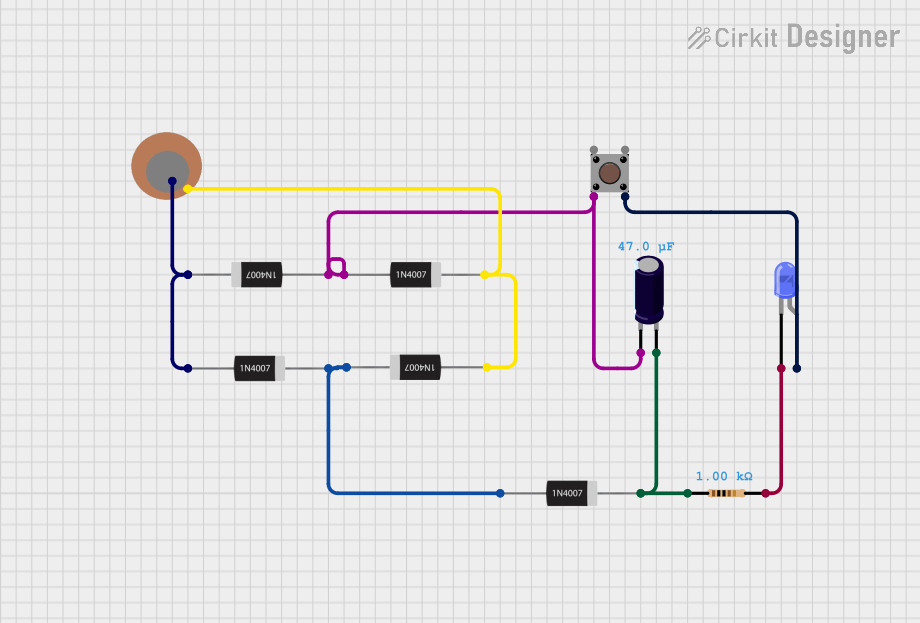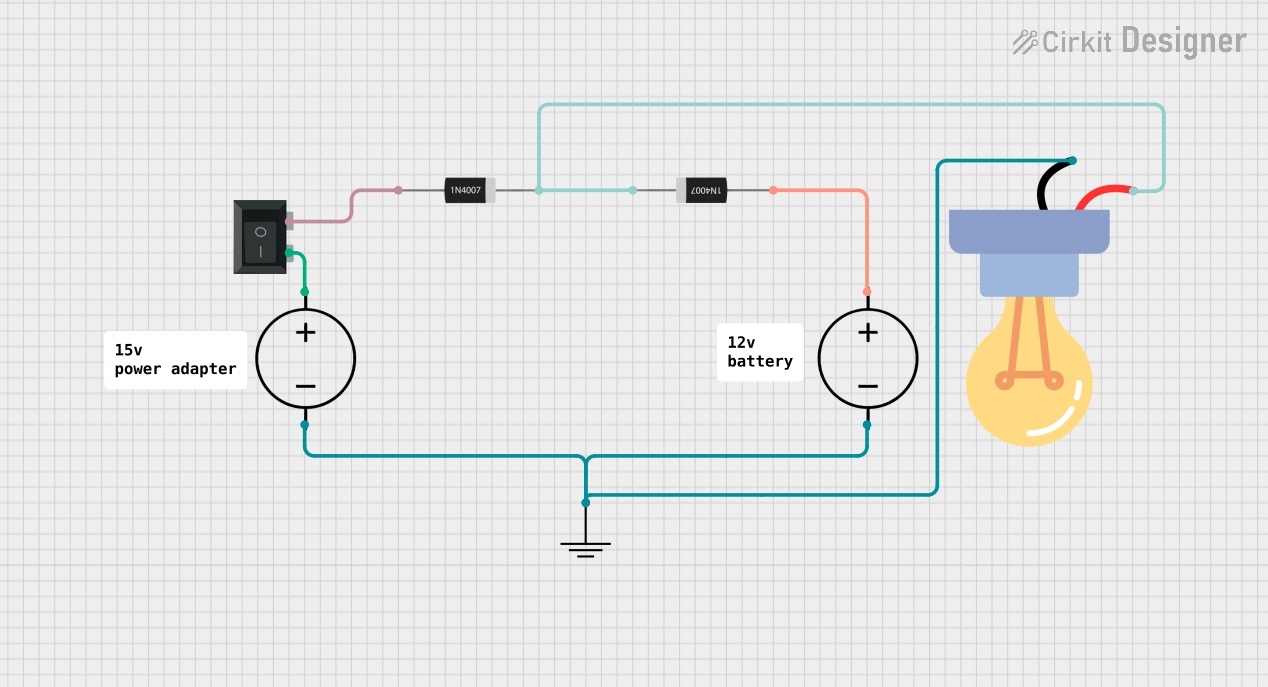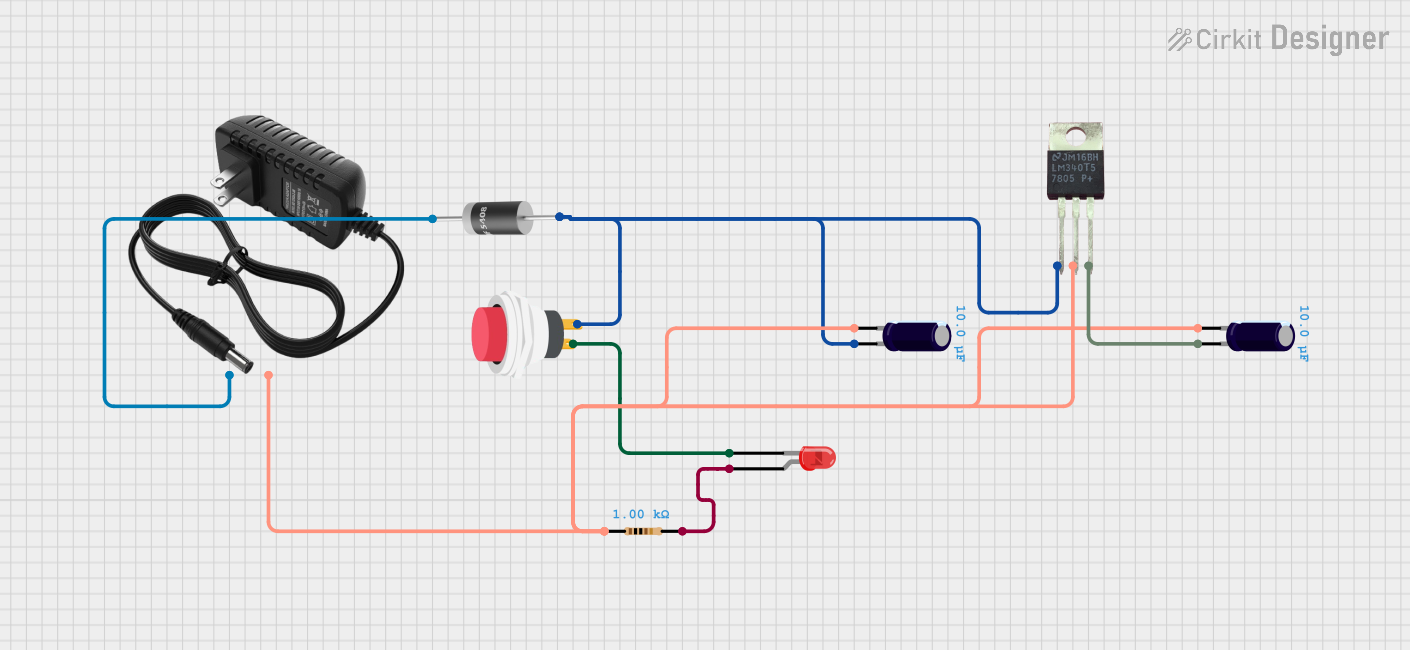
How to Use 1N4148 diode: Examples, Pinouts, and Specs

 Design with 1N4148 diode in Cirkit Designer
Design with 1N4148 diode in Cirkit DesignerIntroduction
The 1N4148 is a widely used general-purpose, small-signal diode known for its high-speed switching capabilities. It is commonly employed in electronic circuits for various applications such as signal rectification, signal demodulation, voltage clamping, and protection against voltage spikes. Due to its versatility, it is a staple in both hobbyist and professional electronic projects.
Explore Projects Built with 1N4148 diode

 Open Project in Cirkit Designer
Open Project in Cirkit Designer
 Open Project in Cirkit Designer
Open Project in Cirkit Designer
 Open Project in Cirkit Designer
Open Project in Cirkit Designer
 Open Project in Cirkit Designer
Open Project in Cirkit DesignerExplore Projects Built with 1N4148 diode

 Open Project in Cirkit Designer
Open Project in Cirkit Designer
 Open Project in Cirkit Designer
Open Project in Cirkit Designer
 Open Project in Cirkit Designer
Open Project in Cirkit Designer
 Open Project in Cirkit Designer
Open Project in Cirkit DesignerTechnical Specifications
Key Technical Details
- Material: Silicon
- Type: Small Signal Diode
- Peak Repetitive Reverse Voltage (Vrrm): 100V
- Continuous Forward Current (If): 200mA
- Peak Forward Surge Current (Ifsm): 500mA (Pulse width ≤ 1s, Duty cycle ≤ 1%)
- Forward Voltage Drop (Vf): 1.0V at If = 10mA
- Reverse Current (Ir): 25nA at Vr = 20V
- Junction Capacitance (Cj): 4pF at Vr = 0V, f = 1MHz
- Reverse Recovery Time (trr): 4ns
- Operating Junction Temperature Range: -65°C to +175°C
Pin Configuration and Descriptions
| Pin Number | Name | Description |
|---|---|---|
| 1 | Anode | The positive side of the diode, where current enters. |
| 2 | Cathode | The negative side of the diode, marked by a band, where current exits. |
Usage Instructions
How to Use the 1N4148 in a Circuit
Directionality: Ensure the diode is oriented correctly in the circuit with the anode connected to the positive voltage and the cathode (marked by a band) connected to the negative side or ground.
Current Limiting: Always use a current-limiting resistor to prevent the diode from exceeding its maximum forward current rating.
Voltage Rating: Do not exceed the peak repetitive reverse voltage rating to avoid breakdown and potential damage to the diode.
Signal Applications: For high-speed switching applications, place the diode where it can clamp or rectify small signals as needed.
Important Considerations and Best Practices
- Temperature: Be mindful of the operating temperature range to prevent thermal runaway.
- Mounting: Ensure proper mounting to avoid mechanical stress that could lead to cracking or breaking.
- Soldering: Use appropriate soldering techniques to prevent damage due to excessive heat.
Troubleshooting and FAQs
Common Issues
- Diode Not Conducting: Check for correct orientation and ensure that the forward voltage is being applied.
- Unexpected Voltage Drops: Verify that the diode is not in a high-current situation that exceeds its maximum forward current rating.
- Diode Damaged by Reverse Voltage: Ensure that the reverse voltage does not exceed the specified limit.
Solutions and Tips
- Testing Diode Functionality: Use a multimeter in diode mode to check for forward and reverse bias functionality.
- Heat Management: If the diode is running hot, consider using a heat sink or improving air circulation around the component.
- Replacement: If the diode is damaged, it should be replaced as it cannot be repaired.
FAQs
Q: Can the 1N4148 be used for power rectification? A: No, the 1N4148 is designed for small-signal applications and is not suitable for power rectification.
Q: What is the maximum frequency the 1N4148 can handle for signal switching? A: The 1N4148 can handle high-frequency signals due to its fast reverse recovery time of 4ns, but the exact maximum frequency will depend on the specific circuit conditions.
Q: How can I identify the anode and cathode on the diode? A: The cathode is marked with a band on the diode's body, and the anode is the unmarked side.
Example Code for Arduino UNO
The 1N4148 diode can be used in conjunction with an Arduino UNO for various purposes, such as protecting inputs or outputs from reverse voltage spikes. Below is an example of how to use the 1N4148 to protect an Arduino input pin.
// Example code to demonstrate the use of a 1N4148 diode for input protection
void setup() {
pinMode(2, INPUT); // Set digital pin 2 as an input
}
void loop() {
int sensorValue = digitalRead(2); // Read the value from the protected input pin
// Process the sensor value as needed
}
In this example, a 1N4148 diode would be connected in parallel with the input pin (anode to ground and cathode to the pin) to protect against negative voltage spikes. This is a simple use case and does not represent the full capabilities of the diode or the Arduino platform.